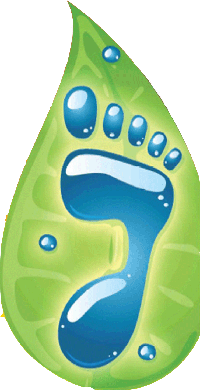By Shiney Varghese
I live in Minneapolis where I have a 24-hour water supply. I take it for granted that I will have running water whenever I need it—for brushing my teeth, drinking, cooking or cleaning. I often forget what a luxury it is!
Before coming to the United States, I lived in a small town in western India called Rajkot for a few years. There, I lived in an apartment complex surrounded by a still developing concrete jungle. The apartment complex promised a regular water supply. Regular water supply meant that running water was available for an hour each in the morning and in the evening. I was living by myself, and I would collect enough water in the morning hours to meet my personal needs for the day. I ate my food out often, since I was on the road most of the time, and got my clothes washed outside. But for my neighboring families—with at least four to five members—it was a struggle to meet their water needs from this municipal water supply. They would often resort to water supplied through tankers from neighboring villages—never mind if those villagers were selling water to the city because it was more profitable than raising crops, or even if it was lowering the water table so much that people without mechanical pumps could no longer get enough water for their basic needs.
These water-poor villagers are among the numbers often cited in United Nations global water statistics: 2.6 billion without water for basic sanitation needs and 1.1 billion without access to safe drinking water.(1) The impact of urban water use in Rajkot on surrounding villages was clearly visible to all.
However, living in the U.S., the connections between my water use and the global water crisis is not so clear. I live in Minnesota by the Mississippi River and our public water system provides me with excellent water at a very reasonable rate. In the U.S., the same clean water is used for washing our cars, watering our lawns and filling our backyard pools, making the average water use of a U.S. resident 151 gallons a day. Compare this with the average water use in most African countries: less than 15 gallons a day.(2)
I realize that my daily water use—for drinking, cleaning, cooking and washing—is only a small part of the water I use. Most of the water I use is invisible to me—it is in the food I eat, in the soda I drink and in the clothes I wear. It is in the making of the gas I put in my car and in the generation of electricity that I use to light my home. It is also in the making of computers, cell phones and cars that I use. With the exception of my summer vegetables, most of these things are not made or grown in Minnesota and thus most of the invisible water I use is not Minnesota water. The water I use could be from California or Florida, or it may be from Australia or South Africa. But there isn’t an easy way to see the connection between my consumption and the water problems that have been hitting headlines.
An early 2001 Harper’s Magazine article had an interesting story to tell: according to the author, one out of two flowers bought in the United States is produced in the Bogotá Savanna in Colombia. The pursuit of flora-culture has resulted in the contamination of water from heavy pesticide use, and also in the lowering of the water table, causing tremendous water stress among the local populations.(3) It would be good to know the water quality and quantity impact, or water footprint, of the flowers we buy or the food we waste. It would be ideal if a specific product or commodity had a label indicating the location of production and/or processing, along with the water footprint, so that we would know not only the extent of the impact but also where the impact is felt.
It is possible that to support the production of my cell phone and my children’s toys, Chinese farmers were denied agricultural water or poor Korean villagers were denied drinking water. I do not know whether in the process of printing colorful patterns on my shirt, water pollution increased in Bangladesh, or whether in the process of growing cotton for clothes, water tables went down in India. My consumption may even be directly affecting water-scarce regions in sub-Saharan Africa.
Sometime ago I came across an excellent resource, the Water Footprint Network, that tries to calculate “virtual water” footprints, i.e., the water embedded in the many traded commodities and products that countries import or export, and that I consume. According to the site, it takes 16,000 liters of water to produce a kilo of beef, 5,000 liters for one kilogram of cheese, 3,000 liters to produce a kilo of rice (one of the most water-intensive grains), 1,800 liters for one kilo of soybeans, 50 liters for one 100 gram orange, and 170 liters for a 200 ml. glass of orange juice.(4) The site also provides the water footprint of a few plant- and animal-derived non-food products. Unfortunately, our knowledge is still in too preliminary a stage for it to provide the water footprint for complex industrial products such as synthetic clothes, plastics, electronic equipment and so on. Granted, these calculations are still not 100 percent accurate. For example, the Web site does not take into account the specific geographical location where a commodity is grown/produced, since depending on the specific agro-ecological conditions, the water footprint of a crop will vary. Nor does it take into account the water quality impact of the production process. But it is a very good first step, and gives plenty of water for thought.
Unfortunately, public policies promote invisible water consumption at individual and societal levels. National policies on agriculture, industry and energy production often assume that water is plentiful or cheap. Water is rarely a limiting factor in setting public policy.
For example, our Farm Bill supports a dominant agriculture model of just a few primary commodity crops that are extremely water-intensive. Agricultural practices that include water stewardship, such as sustainable agriculture, are not similarly rewarded. In moving forward, it is essential that we shift public policy to acknowledge the importance of water, and break this vicious cycle in which we are trapped.
This Earth Day, I found some ideas to reduce my personal water footprint: canning and/or freezing summer vegetables (instead of buying fresh imported vegetables in the middle of winter); reducing meat and other animal-based food items in my diet; shifting to local and/or fair-traded products that are sustainably produced; reducing the amount of processed food I buy and the food I waste; carrying a stainless steel water container; using biodegradable and less polluting cleaning products; using public transport; and buying less. That is a start for me!
Shiney Varghese is a Senior Policy Analyst at the Institute for Agriculture and Trade Policy.
*A version of this article originally appeared in the Spring 2009 edition of A Matter of Spirit, published by the Intercommunity Peace & Justice Center.
Notes
1 World Health Organization/ UNICEF, “Meeting the MDG drinking water and sanitation target: the urban and rural challenge of the decade”, Global Water Supply and Sanitation Assessment, 2006 World Health Organization and United Nations Children’s Fund 2006, p:6-7 (January 12, 2009)http://who.int/water_sanitation_health/monitoring/jmpfinal.pdf
2 United Nations Development Programme (UNDP), “Beyond scarcity: Power, poverty and global water crisis,” Human Development Report 2006, (New York: UNDP, 2006),http://hdr.undp.org/en/media/HDR06-complete.pdf (accessed April 15, 2009).
3 Donovan Hohn and Niala Maharaj, “Fleurs du mal: Thorny truths about the global flower trade,” Harper’s Magazine, February 2001, 66-67.
4 Water Footprint Network, “Water Footprint Product Gallery,” http://www.waterfootprint.org/?page=files/productgallery (accessed April 15, 2009).
